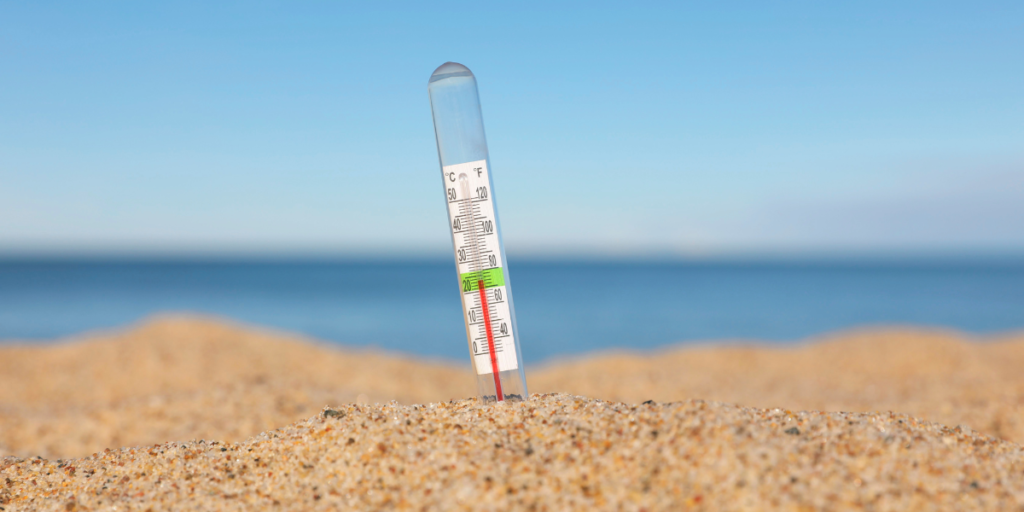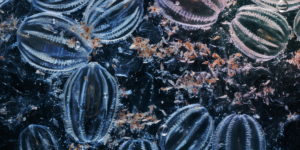Are you aware of the impact that changes in sea level can have on coastal habitats and marine life? Sea level rise is a complex phenomenon caused by multiple factors, including the melting of glaciers and ice sheets, thermal expansion of seawater due to global warming, and changes in ocean currents.
As sea levels continue to rise at an accelerating rate, it is important to understand how these changes affect the delicate ecosystems along coasts where millions of people live.
The effects of sea level rise are not limited to flooding and erosion; they also have significant implications for coastal habitats such as salt marshes, mangroves, and seagrass beds. These habitats provide essential services such as carbon sequestration, water purification, and protection from storm surges.
However, with rising sea levels, these habitats may be permanently inundated or pushed landward into unsuitable locations. The loss or degradation of these ecosystems could result in severe consequences for both humans and wildlife.
Key Takeaways
- Sea level rise is caused by a variety of factors including melting glaciers and ice sheets, thermal expansion of seawater, changes in ocean currents, and burning fossil fuels contributing to global warming.
- Coastal habitats like salt marshes, mangroves, and seagrass beds provide important services to the environment and society, but rising sea levels may permanently inundate or push these habitats into unsuitable locations.
- Coastal ecosystems are threatened by increased flooding and erosion, saltwater intrusion, altered or eliminated habitats for marine creatures, changes in food availability, coastal erosion, and habitat fragmentation.
- Adaptive strategies such as building sea walls, restoring or creating wetlands, public awareness, education on sustainable practices, and fostering stewardship are necessary to mitigate the impacts of sea level rise on coastal habitats and marine life.

The Causes of Sea Level Rise
The main cause of sea level rise isn’t mysterious, it’s simply the result of warmer oceans that expand and melting ice sheets and glaciers. These two factors are both natural and human-induced.
The Earth’s climate has been fluctuating for millions of years, with periods of warming followed by cooling. However, in recent decades, human activities such as burning fossil fuels have accelerated the rate of global warming.
Scientists predict that sea levels will continue to rise in the future, but there is uncertainty about how much and how quickly this will occur. Various models suggest that by 2100, global sea levels could rise anywhere from 30 cm to over 2 meters above today’s levels.
This projection depends on various factors like greenhouse gas emissions, land use changes, ocean currents and weather patterns among others which can influence ice sheet melting rates or ocean expansion due to heat absorption.
Despite the uncertainties involved in projecting future sea level rise, it is clear that coastal habitats and marine life will be affected as their environment shifts and changes with rising seas.
Impacts on Coastal Habitats
Coastal ecosystems are significantly impacted by fluctuations in the height of ocean waters. As sea levels rise, coastal habitats such as wetlands, marshes, and estuaries are threatened by increased flooding and erosion. These habitats provide critical breeding, nesting, and feeding grounds for a wide range of marine life including fish, shellfish, seabirds, turtles, and mammals.
Coastal erosion is one of the most significant impacts of rising sea levels on these habitats. The higher water levels can cause waves to erode shorelines at an accelerated rate, causing beaches to shrink or disappear entirely. This not only destroys important habitat for marine life but can also lead to property damage and loss of infrastructure.
Additionally, saltwater intrusion occurs as rising sea levels push seawater into freshwater systems like rivers and groundwater reserves. This intrusion can negatively impact plant growth in wetlands and make it difficult for animals that rely on freshwater sources to survive.
Overall, changes in sea level have far-reaching consequences on coastal ecosystems that must be addressed through careful management and conservation efforts.
Impacts on Marine Life
Now, let’s talk about the impacts of sea level changes on marine life.
As sea levels rise, habitats for marine creatures are being altered or lost altogether. This can lead to significant changes in species distribution and abundance as well as a decrease in biodiversity.
Additionally, changes in food availability can further impact the survival and reproduction of marine organisms, affecting entire ecosystems.
Moreover, increased vulnerability to storms and other natural disasters caused by rising seas can have devastating effects on already stressed populations, exacerbating the effects of climate change on our oceans.
Changes in Habitat Availability
As sea levels rise, there’s less space for coastal habitats and marine life to thrive. This causes significant changes in the ecosystem. Coastal erosion and habitat fragmentation are two major consequences of rising sea levels that have a direct impact on the availability of habitats for marine organisms.
As waves and tides erode coastal areas, habitats such as coral reefs, seagrass meadows, and mangrove forests become smaller or disappear altogether. This leaves marine species with fewer places to breed, feed, and find shelter.
In addition to coastal erosion, rising sea levels also lead to habitat fragmentation. As water encroaches on land, it creates isolated pockets of habitat that are disconnected from one another. This can prevent species from moving between habitats or accessing essential resources like food or breeding sites.
Habitat fragmentation can also increase competition among species for limited resources within a small area. These changes in habitat availability have wide-ranging effects on the distribution and abundance of marine life along coasts worldwide.
Changes in Food Availability
You’re likely unaware of how rising sea levels are impacting the availability of your favorite seafood, potentially causing shortages and higher prices at the grocery store. As sea levels rise, it causes changes in ocean temperatures, currents, and salinity levels which can significantly impact the migration patterns of marine species.
Some fish may move to cooler waters or seek out more suitable habitats, while others may struggle to adapt and suffer from ecosystem disruption. Migration patterns play a critical role in maintaining healthy populations of marine life. When these patterns are disrupted due to changing environmental conditions like rising sea levels, it can cause significant consequences for both commercial and recreational fishing industries.
Additionally, as certain species migrate away from their traditional habitats in search of more suitable conditions, it can also lead to imbalances within ecosystems that rely on these species for food. Understanding how rising sea levels impact food availability is essential for developing sustainable management strategies that ensure we protect our oceans’ delicate balance.
Increased Vulnerability to Storms and Other Natural Disasters
Now that we’ve discussed changes in food availability, let’s move on to the topic of increased vulnerability to storms and other natural disasters.
As sea levels rise, coastal habitats and marine life are not only affected by changes in temperature and acidity, but also by the increased frequency and intensity of storms.
Storm surges, which are caused by the combination of high winds and low pressure systems, can cause devastating flooding in coastal areas. This not only affects human settlements but also has a significant impact on coastal habitats and marine life.
Increased storm surge can lead to beach erosion, which removes important nesting sites for sea turtles and reduces breeding grounds for shorebirds. Additionally, strong currents generated by storms can disrupt feeding patterns for marine species that rely on specific locations or currents to bring them food.
Overall, it’s clear that changes in sea level have far-reaching effects beyond just simple flooding or temperature shifts, impacting entire ecosystems in complex ways.

Mitigating the Impacts of Sea Level Rise
By implementing protective measures such as building sea walls and planting mangroves, we can help shield coastal habitats from the rising tides.
Coastal communities are increasingly using adaptive strategies to mitigate the impacts of sea level rise. These strategies involve community involvement and collaboration with scientists and policymakers.
Sea walls are one of the most common forms of protection used to prevent flooding caused by sea level rise. They’re typically made from concrete or other durable materials designed to withstand erosion and wave action.
Another effective strategy is restoring or creating wetlands, which act as natural buffers against storm surges. Additionally, planting mangroves in areas prone to flooding can reduce erosion and provide habitat for marine life.
By adopting these mitigation measures, coastal habitats have a better chance of adapting to changing environmental conditions caused by sea level rise.
The Importance of Taking Action
Taking action to mitigate the impacts of rising sea levels is crucial for preserving the resilience and longevity of our coastal communities and the ecosystems they support.
Collaborative efforts between government agencies, community organizations, and local businesses are essential in creating comprehensive plans that address the complex issues associated with sea level rise. By working together, we can develop adaptive strategies that will help protect our shorelines from erosion, flooding, and other environmental hazards.
Public awareness is also a key factor in mitigating the effects of rising tides on coastal habitats and marine life. Educating individuals about sustainable practices such as reducing carbon emissions, conserving water resources, and minimizing waste can go a long way in reducing our overall impact on the environment.
Additionally, increasing public engagement through community events and outreach programs can help foster a sense of stewardship towards our coastlines. Together, by taking action and raising awareness about sea level rise, we can ensure that future generations continue to enjoy thriving coastal ecosystems.
Frequently Asked Questions
How does sea level rise affect human activities such as fishing and tourism in coastal regions?
Are you aware of the potential impact that sea level rise can have on fishing regulations and tourism adaptation in coastal regions? Research suggests that as sea levels increase, there may be a need for stricter fishing regulations and adaptations to tourist infrastructure.
What are the long-term effects of sea level rise on coastal ecosystems and biodiversity?
To ensure long term adaptation, coastal ecosystems need to build resilience against rising sea levels. Biodiversity will be affected as habitats shift and species are forced to relocate. Scientific research is essential to understand these impacts.
How can individuals and communities prepare for the impacts of sea level rise on coastal habitats and marine life?
Preparing for the impacts of sea level rise on coastal habitats and marine life requires adaptation strategies. This includes enhancing coastal infrastructure, such as building sea walls and elevating buildings. Such measures can help mitigate the effects of rising sea levels.
Are there any natural processes that can mitigate the effects of sea level rise on coastal ecosystems?
Coastal vegetation can reduce the impacts of sea level rise by trapping sediment and building up topography. Sediment deposition from rivers and waves can also help maintain elevation. Research shows these natural processes can buffer coastal ecosystems against rising sea levels.
How does sea level rise interact with other environmental issues such as ocean acidification and climate change?
You may wonder how sea level rise interacts with other environmental issues. Coastal erosion and saltwater intrusion are two concerns that exacerbate the effects of climate change and ocean acidification on marine life. Scientific research shows that these factors work together to harm coastal habitats.




